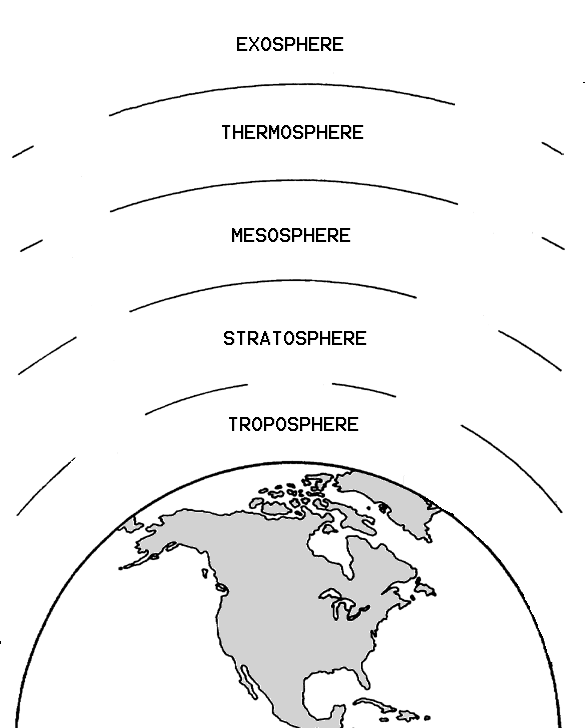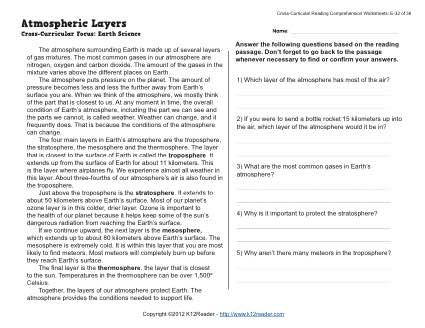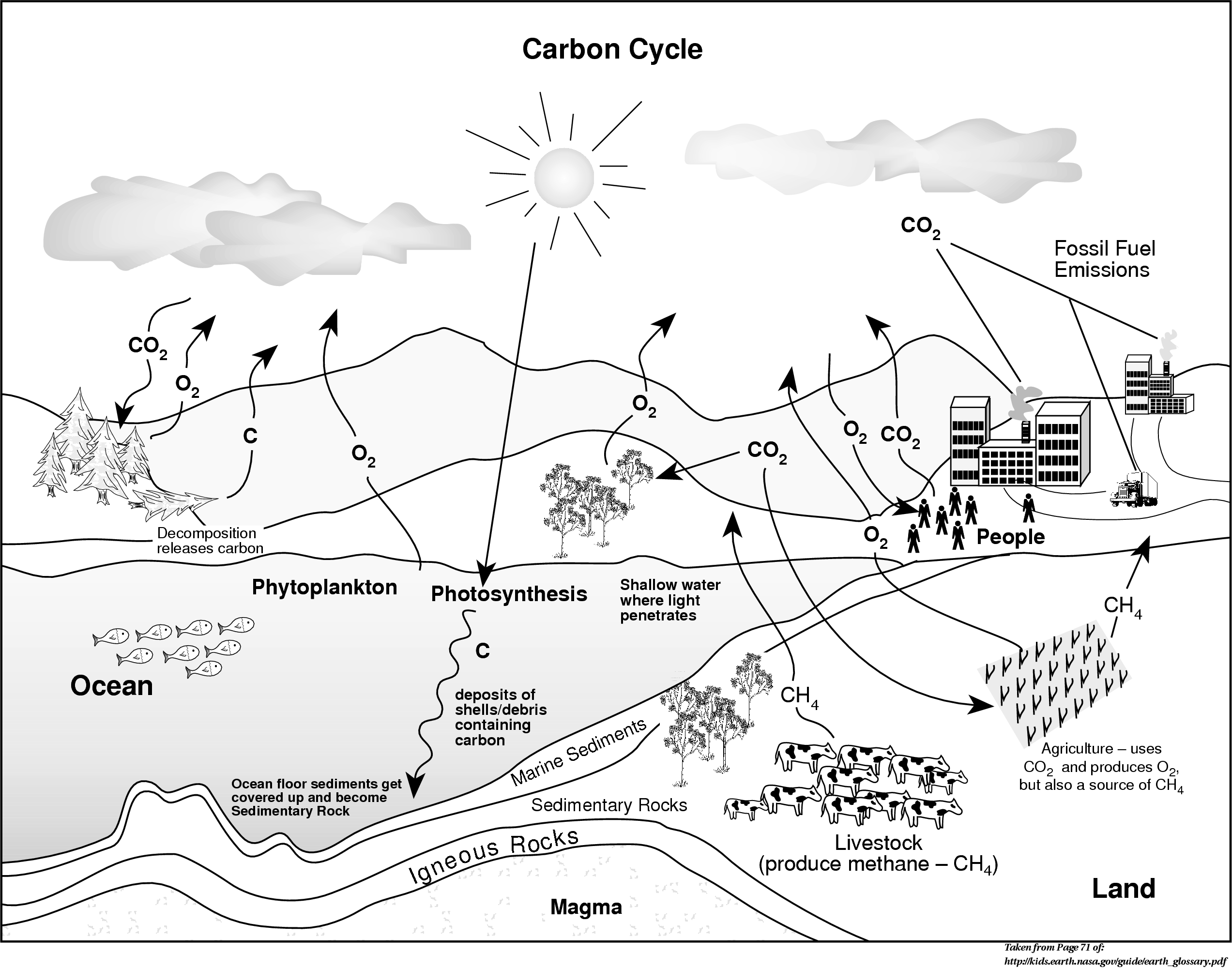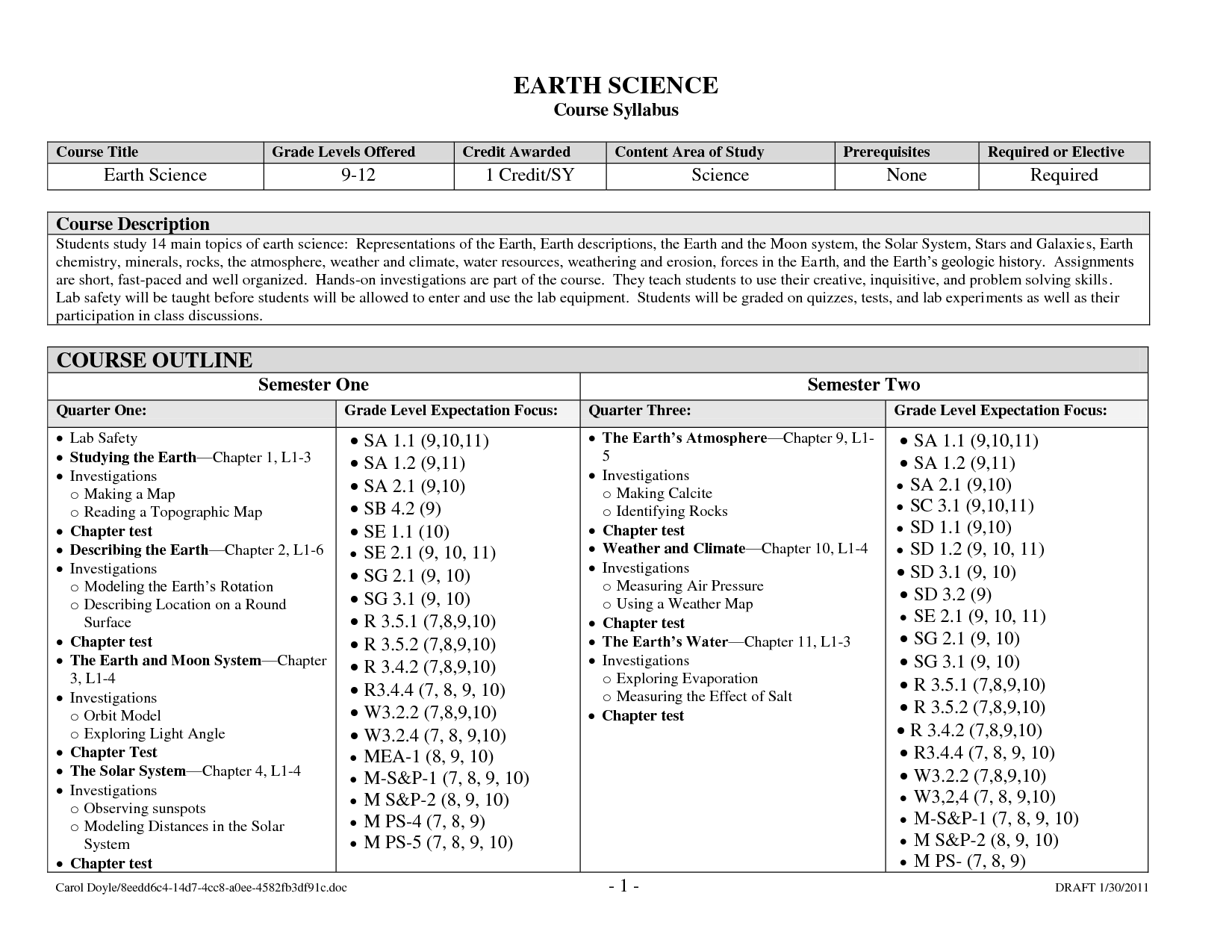Levels of the Atmosphere Worksheet
The Levels of the Atmosphere Worksheet is designed to provide a comprehensive understanding of the different layers that make up Earth's atmosphere. This worksheet is suitable for students studying earth science or environmental science and is an excellent resource for both middle and high school levels.
Table of Images 👆
More Other Worksheets
Kindergarten Worksheet My RoomSpanish Verb Worksheets
Cooking Vocabulary Worksheet
DNA Code Worksheet
Meiosis Worksheet Answer Key
Art Handouts and Worksheets
7 Elements of Art Worksheets
All Amendment Worksheet
Symmetry Art Worksheets
Daily Meal Planning Worksheet
What is the troposphere?
The troposphere is the lowest layer of Earth's atmosphere, ranging from the surface to about 10 to 15 kilometers (6 to 9 miles) in altitude. It is where weather phenomena occur, such as clouds, precipitation, and winds, and contains the majority of the atmosphere's mass and water vapor.
What is the stratosphere?
The stratosphere is the second layer of Earth's atmosphere, located above the troposphere and below the mesosphere. It extends from about 10 to 50 kilometers above the Earth's surface and contains the ozone layer, which plays a crucial role in absorbing and blocking harmful ultraviolet radiation from the sun. The stratosphere is characterized by temperatures that increase with altitude due to the absorption of solar radiation by the ozone layer.
What is the mesosphere?
The mesosphere is the layer of Earth's atmosphere situated above the stratosphere and below the thermosphere. It extends from about 31 miles (50 kilometers) to 53 miles (85 kilometers) above the Earth's surface. The mesosphere is where most meteorites burn up upon entering the Earth's atmosphere due to friction with air molecules at high speeds. Temperatures in the mesosphere decrease with altitude, making it one of the coldest layers of the atmosphere.
What is the thermosphere?
The thermosphere is the layer of Earth's atmosphere located above the mesosphere and below the exosphere, approximately 80 to 550 kilometers (50 to 342 miles) above the Earth's surface. In this region, temperatures can reach thousands of degrees Celsius due to the absorption of solar radiation, but it would not feel hot to a human due to the extremely low density of air molecules. The thermosphere also plays a critical role in various atmospheric processes such as the auroras and the orbit of satellites.
What is the exosphere?
The exosphere is the outermost layer of Earth's atmosphere, stretching from about 500 to 1000 kilometers (310 to 620 miles) above the planet's surface. It is where the atmosphere transitions into outer space, and the air density is extremely low. The exosphere is mainly composed of individual atoms and molecules of hydrogen and helium, and it is where satellites and other artificial objects orbit the Earth.
What is the ozone layer?
The ozone layer is a region of Earth's stratosphere that contains a high concentration of ozone molecules. It plays a crucial role in absorbing the majority of the sun's harmful ultraviolet radiation, thus protecting life on Earth from the negative effects of excessive UV exposure, such as skin cancer, cataracts, and harm to marine life and ecosystems.
What is the significance of the tropopause?
The tropopause is significant as it marks the boundary between the troposphere, the lowest layer of Earth's atmosphere where weather occurs, and the stratosphere, the layer above where the ozone layer is found. It acts as a barrier preventing mixing of air and plays a crucial role in determining the characteristics of weather and climate patterns. The tropopause also influences the behavior of jet streams and atmospheric circulations, making it a key feature in atmospheric dynamics and the understanding of Earth's climate system.
What is the stratopause?
The stratopause is a region in Earth's atmosphere that is between the stratosphere and the mesosphere. It represents the boundary between these two layers and is characterized by a temperature inversion, where temperatures start to rise rather than decrease with altitude. This region plays a crucial role in the overall dynamics and composition of the atmosphere.
What is the mesopause?
The mesopause is the boundary that separates the mesosphere and the thermosphere in Earth's atmosphere. It is the coldest layer of Earth's atmosphere, located at an altitude of about 80-85 kilometers above the Earth's surface, where temperatures can drop to as low as -90 degrees Celsius.
What is the thermopause?
The thermopause is a boundary layer in the Earth's atmosphere that separates the thermosphere from the exosphere. It is located at an altitude of roughly 500 to 1000 kilometers above Earth's surface and represents the point at which temperatures cease to increase with height. Beyond the thermopause, the atmosphere becomes very sparse and gradually transitions into the exosphere, where particles can escape into space.
Have something to share?
Who is Worksheeto?
At Worksheeto, we are committed to delivering an extensive and varied portfolio of superior quality worksheets, designed to address the educational demands of students, educators, and parents.



































Comments